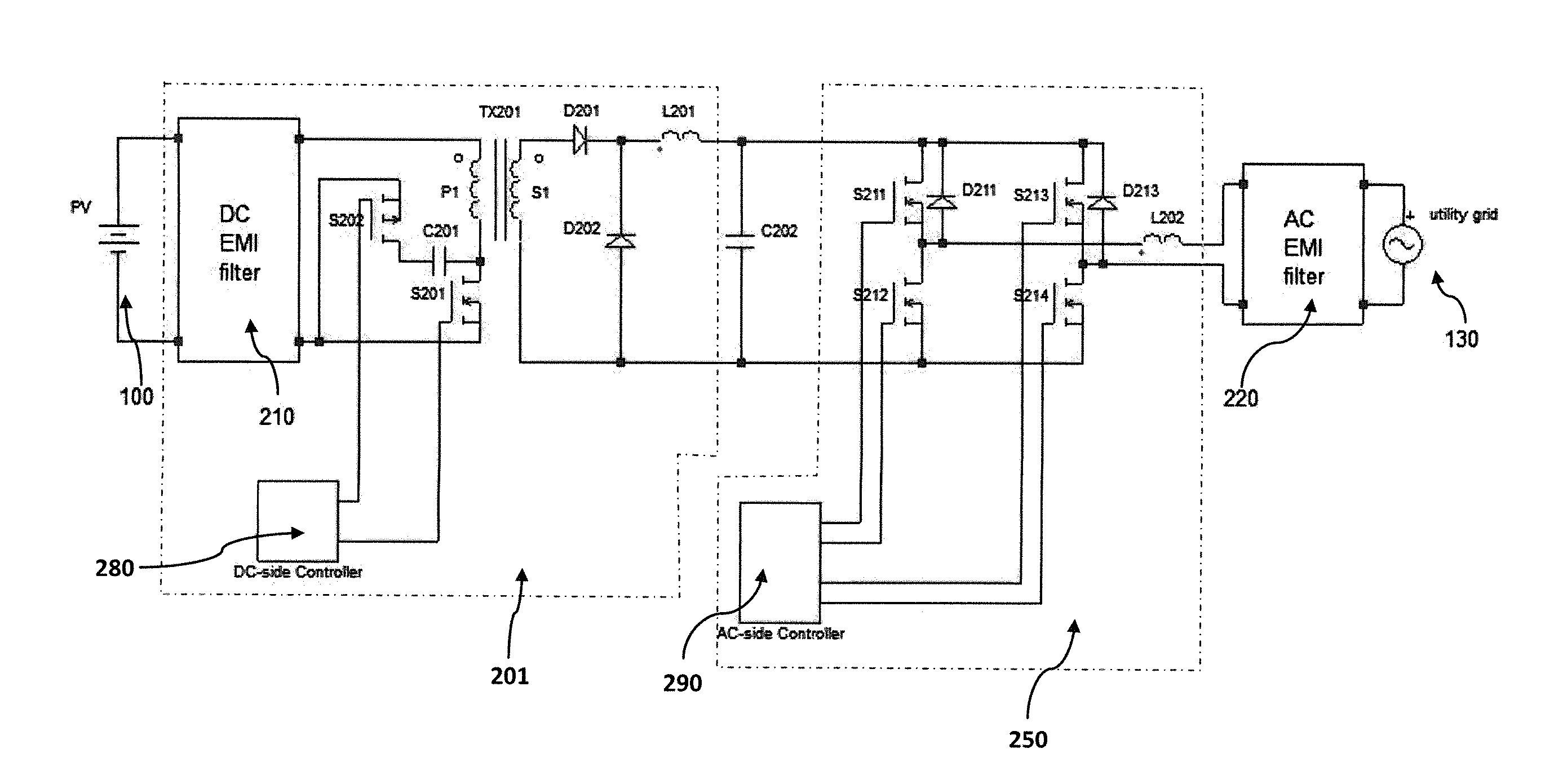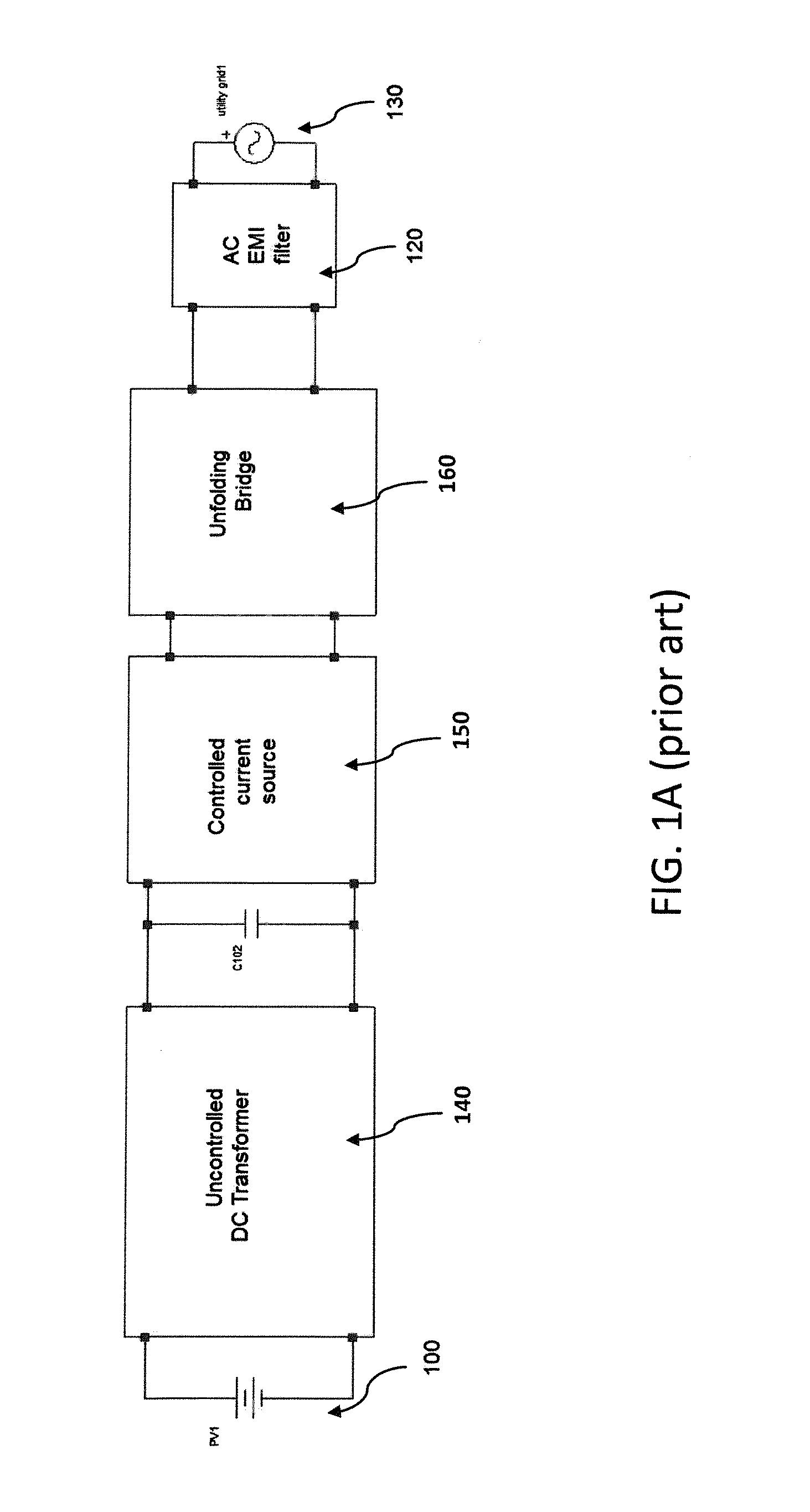Smart grid power converter
a power converter and smart grid technology, applied in the direction of dc-dc conversion, climate sustainability, power electronics conversion, etc., can solve the problems of increasing costs and losses, reducing reliability, and reducing so as to reduce the size of magnetic components, reduce the effect of magnetic components and minimal impact on the performance of power converters
- Summary
- Abstract
- Description
- Claims
- Application Information
AI Technical Summary
Benefits of technology
Problems solved by technology
Method used
Image
Examples
Embodiment Construction
Prior Art
[0035]FIG. 1A shows a block diagram and FIG. 1B shows a basic circuit of a prior art micro-inverter. The converter has three stages. The first stage 140 is a DC-DC transformer that is composed of an LLC resonant converter operating at a fixed frequency that is equal to its upper resonant frequency. The second stage 150 is a controlled current source that is composed of a high-voltage buck converter without the output capacitor and which produces a full-wave rectified sinusoidal output current that is in phase with the grid. The third stage 160 is an unfolding bridge that is composed of a MOSFET full-bridge that switches at grid frequency (i.e. 50 Hz or 60 Hz) to change the current sourced by second stage 150 into a full sinusoid.
[0036]The DC transformer consists of Switches S101 and S102, controller 180, capacitor C101, transformer T101 which contains a leakage inductance (not shown), diode bridge D101, D102, D103, and D104, and DC bus cap C102. Bus cap C102 is a non-electr...
PUM
 Login to View More
Login to View More Abstract
Description
Claims
Application Information
 Login to View More
Login to View More - R&D
- Intellectual Property
- Life Sciences
- Materials
- Tech Scout
- Unparalleled Data Quality
- Higher Quality Content
- 60% Fewer Hallucinations
Browse by: Latest US Patents, China's latest patents, Technical Efficacy Thesaurus, Application Domain, Technology Topic, Popular Technical Reports.
© 2025 PatSnap. All rights reserved.Legal|Privacy policy|Modern Slavery Act Transparency Statement|Sitemap|About US| Contact US: help@patsnap.com



